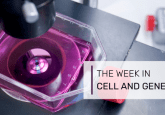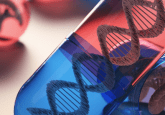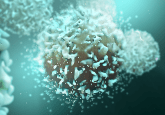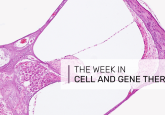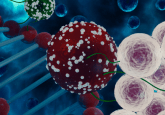CD34+ cells for cell and gene therapy development: an interview with Dr Manon Destalminil
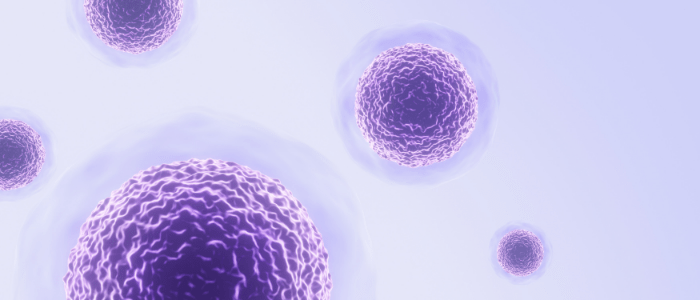

Dr Manon Destalminil works on human hematopoietic stem cells at CellProthera (France) as Bioprocessing Project Leader. She previously worked on different animal models to understand the role of the microenvironment on stem cell proprieties in both mice and drosophila. Now her mission at CellProthera is to qualify and validate their new generation of StemXpand cell expansion platform and the associated kits that are be used for the production of ProtheraCytes for AMI patients.
In this interview, Dr Destalminil discusses the advantages of using CD34+ cells for cell and gene therapy development, why researchers should use mobilized CD34+ cells as opposed to other conventions, and what characteristics are needed when using frozen cells. In addition to this, we hear how CellProthera is able to optimize their process with commercially available CD34+ cells and advancements she would most like to see in this space.
Can you tell us more about your role and CellProthera?
CellProthera is a medical biotech company founded in 2008 in Mulhouse (France). Its activity is currently focused on the development of a revolutionary therapeutic approach allowing the regeneration of myocardial tissue following an acute myocardial infarct (AMI) by injection of a cell graft containing autologous adult stem cells sampled directly from the patient: the ProtheraCytes.
My name is Manon Destalminil and I am a project leader in the research and development team at CellProthera. I work on the qualification and the validation of a new generation of the StemXpand® cell expansion platform and the associated kits that are be used for the production of ProtheraCytes for AMI patients.
What are the advantages of using CD34+ cells for cell and gene therapy development?
The unique therapeutic approach proposed by CellProthera relies on an autologous graft of CD34+ cells called the ProtheraCytes. In the context of our clinical trial, our production process requires blood sampling to be performed within 2 weeks following a severe AMI. The sampling occurs after a treatment period using G-CSF to mobilize the patient’s own stem cells into the blood flow. The patient’s blood sample is then shipped to a local certified cell therapy center and processed under GMP in our proprietary automated cell expansion platform (StemXpand) using our standardized kit (StemPack) for the preparation of the final graft product (ProtheraCytes) (Saucourt et al. 2019).
In the context of the research and development for the new generation of the cell expansion platform StemXpand and the kit StemPack, we cannot use AMI patient’s blood. Our team uses instead healthy volunteer’s blood, which is highly regulated by competent authorities. Even though it is the closest model to our patient population, the availability of the volunteer’s blood is limited, and from an ethical point of view, we have to find an alternative for our research.
That is where the frozen CD34+ cells from healthy donors, commercialized by Lonza (NC, USA), are very useful.
How were you able to optimize your process with commercially available CD34+ cells?
Indeed, they allow our team to perform assays whenever we want as they are not dependent on volunteer availability. Second, those cells are already purified, which enables us to gain precious time during our manufacturing protocol as we do not have to work with peripheral blood to isolate CD34+ cells. Furthermore, it allows us to perform robust assays because we have access to different batches of CD34+ cells, taking into account the variability between different people. Finally, in the case of process development, we can access the same batch of CD34+ cells, which facilitates the assessment of reproducibility between different assays.
What key characteristics need to be considered when using frozen CD34+ cells?
The key characteristics that have to be considered with these cells are viability, purity and the number of CD34+ cells in the vial. These cells are generally easy to work with because the viability and purity after thawing are great.
What challenges do you encounter in the development process for these cells?
The main challenges encountered are the differentiation that occurs during the culture and the fact that, in some cases, results obtained with the frozen CD34+ cells can be slightly different from fresh healthy volunteer’s cells. This is something that can be expected when using a model, but it is information to keep in mind.
In your opinion, how might these challenges be addressed?
To overcome these challenges, we can adapt our process, in some cases, to ensure the best purity possible during cell culture, as part of our development. A second possibility concerning the differences that may be observed is that we can validate our data with healthy volunteer’s blood when possible.
Why should researchers use mobilized CD34+ cells as opposed to other conventions (e.g., direct aspiration of bone marrow or use of cord blood CD34+ cells)?
The availability of fresh adult CD34+ cells from bone marrow is very limited and the use of cord blood cells, although they are easier to obtain fresh in comparison to adult CD34+ cells, have sterility issues for cell culture. This particular point can be very challenging when you have to do cell culture without antibiotics. The use of frozen cells from healthy donors allows us and other researchers to have a starting biologic material for cell culture, which is sterile, reproducible, on-demand and in our case as close to our patient cells as possible.
Can you tell us more about the clinical applications of CD34+ cells and what results have been generated from their use so far?
The use of the CD34+ cells in our lab are for quality control, research and development, and training of the lab staff. The latest use was for the cell therapy centers’ operators training – people manufacturing the ProtheraCytes for our clinical study.
Looking to the future, what advancements would you most like to see in this space?
We would like to see increased funding from governmental agencies and private investors as this would significantly help advance these therapies. AMI is a leading cause of morbidity and mortality throughout the world and running clinical trials is expensive and requires multiple years of investment in research and development. These efforts will eventually bear fruit by reducing the morbidity and mortality after AMI. Our preliminary clinical data is very promising. In our clinical trial, some patients scheduled to receive a heart transplant after AMI were injected with autologous CD34+ cells. These patients improved so much to the point of no longer needing the heart transplant and are still alive and well 12 years after the procedure (Pasquet et al. 2009).
Disclaimer
The opinions expressed in this interview are those of the interviewee and do not necessarily reflect the views of RegMedNet or Future Science Group.
In association with:

